Five Jails Where I Wouldn’t Mind Doing Time
As the Criminology Museum in Rome puts it, ‘crime and punishment’ before the Enlightenment consisted of torture and executions, with gory details in between. The history of incarceration blends social control, treatment of the mentally ill, religious zealotry, and bizarre instruments into a big, interesting mess.
Our word “penitentiary” descends from “penitent” – to regret one’s sins, and our modern incarceration system came from the movement in the late 1700s to convince criminals to confess and repent (there’s that word again). The first formal ‘jail’ in the United States was the Walnut Street Jail in Philadelphia, which was operated by Dr. Benjamin Rush, praised for his humanitarian approach to incarceration. When being drawn and quartered or tarred and feathered are the alternative approaches, locking someone in a room by themselves seems down right angelic.
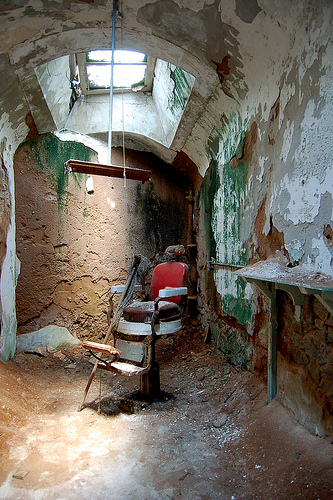
source: curiousexpeditions.com
At the Walnut Street Jail, all the prisoners were in solitary confinement, sometimes manufacturing goods. The jail was closed, though, because, it turns out, solitary confinement drives people crazy. The Eastern State Penitentiary replaced the Walnut Street Jail in 1829, but over time the Eastern State Penitentiary became corrupt with abusive guards. Overtime the prison reformed to the “Auburn Model,” in which prisoners shared cells and spent time together. The penitentiary remained open until 1971, and even Al Capone in a comfortable cell on his first criminal charge in 1929.
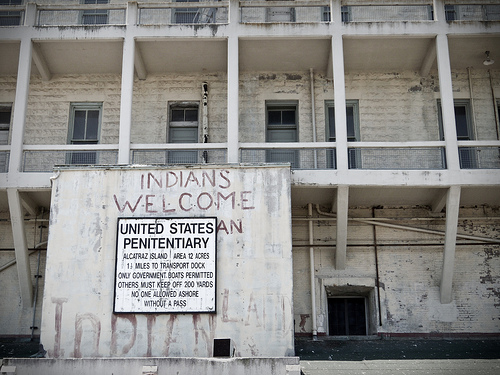
source: flickr.com
Capone only spent nine months in Eastern State and was released back to Chicago. But the Bureau of Prohibition was mounting another case, and in 1931 he was indicted on income tax invasion and sentenced to 11 years in prison, part of which he spent at Alcatraz, the most infamous American prison. On an island in the San Francisco Bay, Alcatraz hosted Al Capone, Robert “Birdman” Stroud, and George “Machine Gun” Kelly. The island provided an ideal home for a prison because of the icy waters surrounding its shores – three prisoners who managed to slowly chisel their way out of the prison died at sea. After the prison was closed in 1963, the island was the site of a radical occupation by the American Indian Movement from 1969 ‘til 1971, an armed standoff between U.S. Marshals and American Indians who claimed the island belonged to their peoples because of an 1868 treaty. On November 20, 1969, 79 American Indians landed on Alcatraz to begin their occupation of the federal land. The government cut off water and electricity to the island, even while celebrities like Jane Fonda and Marlon Brando rallied around the cause. There were daily radio broadcasts from the island, but because of the physical hardship of the land, the occupiers slowly began to dwindle. In June 1971, U.S. Marshalls stormed the island to remove the remaining 15 radicals. Its sordid past makes Alcatraz a fascinating trip. The price is steep – $26 for an adult. Former inmates and guards recorded the audio tour (included in the ticket price); their voices are the most compelling part of the Rock.
The Europeans, though, have a longer, bloodier history, and the museums across Europe dedicated to torture and incarceration far exceed the Puritan penitence on this side of the ocean.
![]()
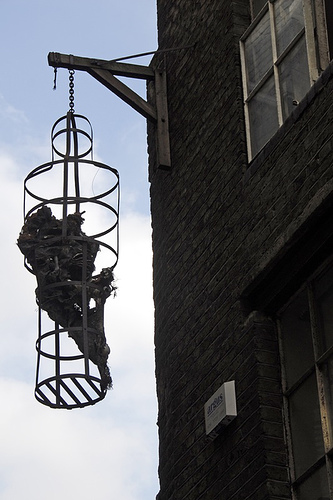
source: flickr.com
The Clink in London bequeathed its name to prisons everywhere. Operated between 1144 and 1780 this prison held common criminals like prostitutes and debtors. With exhibits that give the social, historical and religious context to prison life, the museum at the Clink offers a unique view of penal life. To feel what a sentenced criminal did, you can put your head on a real executioner’s block.
The Prison Gate Museum in the Hague (Netherlands) held prisoners from 1420 to 1828, including such famous Dutchmen as Johan and Cornelius de Witt. The brothers, from a wealthy family, were successful statesmen in the 1600s. They consolidated Dutch power and expanded global interests - however, they were also blamed for the French invasion of the Netherlands in 1672. The brothers were jailed in the Prison Gate, until an angry mob stormed the prison and brutally tortured, mutilated and killed them. The crowds cut out their hearts and put them on stakes as trophies. The incident is now considered one of the most disgraceful in Dutch history. Next to the branding irons, racks (which you can try out), and other torture implements, the museum provides illustrations about the more effective use of these morbid tools. For a more complete look at criminal justice, the curious visitor can follow up a visit to these medieval torture chambers with a trek to the UN’s International Criminal Court.
Though technically not in a prison, the Prefectural Police Museum in Paris is located in the police headquarters, which is the next best thing, right? The museum features more contemporary criminal ephemera, including documents from the Dreyfus Affair, an execution post from the 1940s, and a gun built into a fountain pen from the Nazi era.
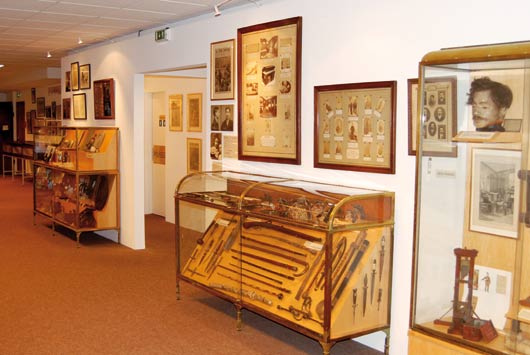 Like
Like
source: prefecturepolice.interieur.gouv.fr
Alcatraz, the Cork City Gaol in Ireland offers an audio tour recorded by prisoners and wardens. Under British rule, Ireland suffered from food shortages and English landlords could - and did - fire tenant farmers at a whim, leaving families with no income or sustenance. These colonial conditions left many Irish with no choice but to steal or otherwise break the law. The museum at Cork City Gaol recreates the harsh conditions of the prison and the poverty that led offenders to a life of crime with life-size models, furnished cells and audio of shuffling feet and coughing inmates. Visitors to the prison can also visit the cafe to sample a Victorian prisoner’s fare. Also a film features inmates recounting their tales to a judge. (The museum at the Kilmainham Gaol in Dublin focuses on the struggle for Irish independence.)
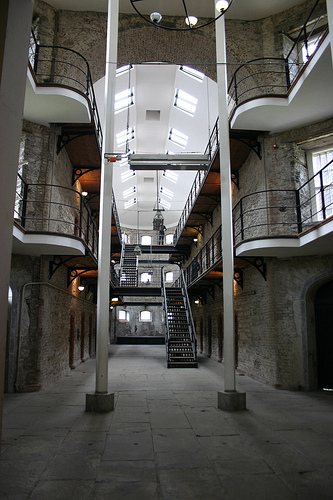
source: flickr.com
It would irresponsible to omit museums about torture. Though technically not in prisons, these museums shed light on the criminal element at the origin of all prisons. The Kriminalmuseum in Vienna and the Criminology Museum in Rome both delve into the criminal mind, featuring the tools of cold-blooded murderers along with torture implements. In Vienna, the museum meticulously – maybe too meticulously – details inventive murderers. The Criminology Museum also depicts infamous Italian criminals alongside findings of criminal anthropologists into the ‘criminal mind.’ Of course, they have the requisite terrifying tools, like the mute’s bridle.
Maybe that was more than five, but what are you gonna do, kill me?

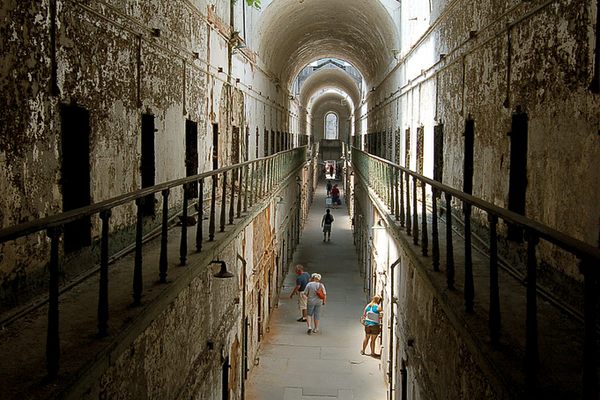




Follow us on Twitter to get the latest on the world's hidden wonders.
Like us on Facebook to get the latest on the world's hidden wonders.
Follow us on Twitter Like us on Facebook